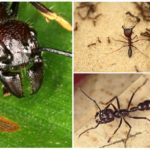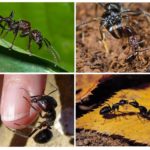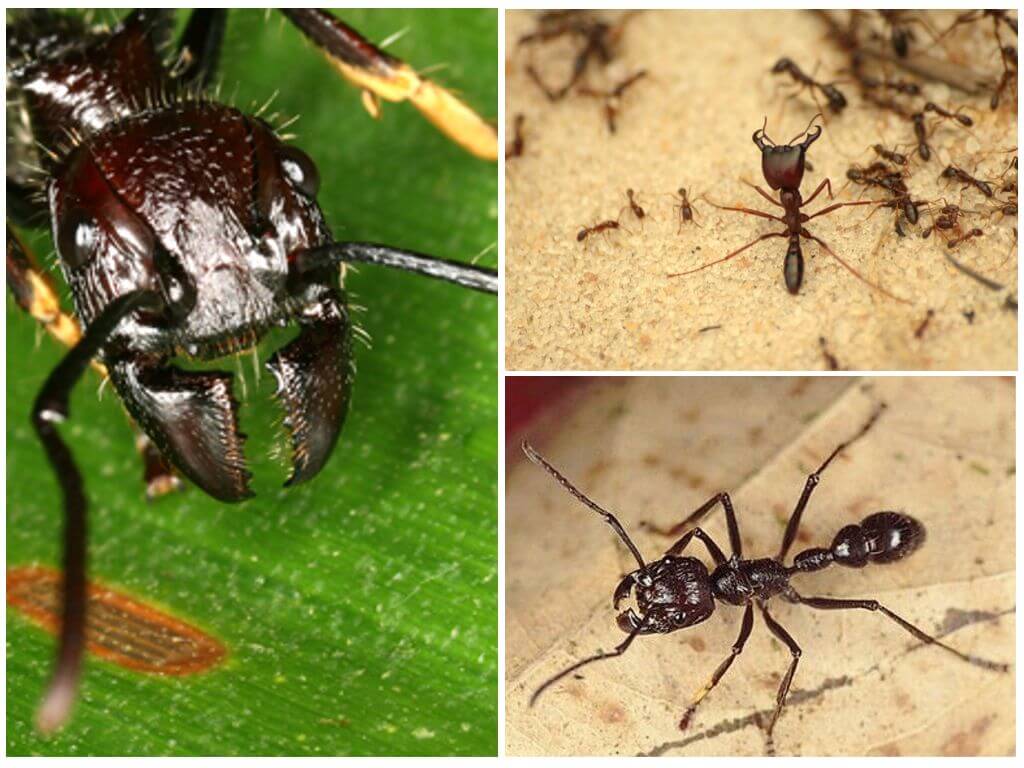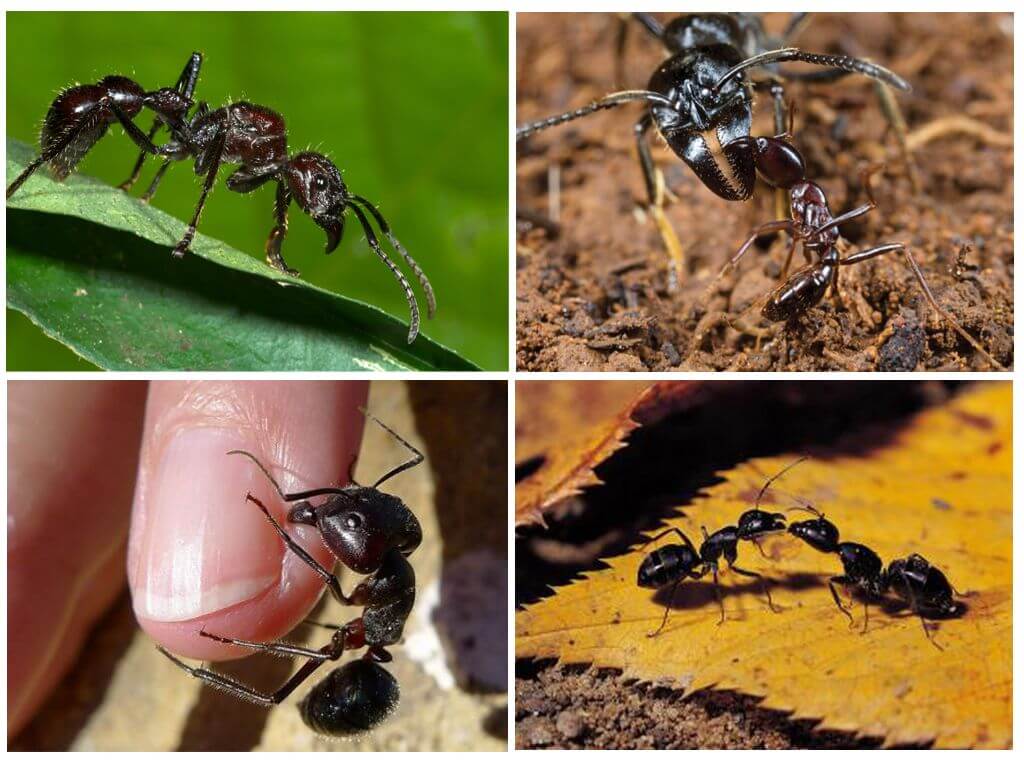Ants bullet
- Ant bullet
- Paraponera clavata lifestyle
The ant bullet is quite large, and its bite is similar to a bullet wound. Arthropods sting much more painful than any other insect. And although the bite for the human body is not fatal, but it brings terrible torment throughout the day.
Appearance and habitat
All ants bullets have the same color - black-brown, and family members do not differ much from each other:
- foragers are the smallest, their length reaches 2.5 centimeters;
- females grow up to 3 centimeters.
Photos of ant bullets show that ant queen similar to other individuals, but has a more rounded abdomen.
Paraponera Clavata eggs (paraponera) resemble rice in shape and are distinguished by a pale yellow color.
On a note!
Each individual has a long sting and a large head with powerful mandibles. Ant legs and the body is covered with light spikes, like thin needles.
You can meet ants bullets in the territory from Nicaragua to Paraguay. In tropical forests, they are found in the roots of trees and less often on the trunks themselves. On average, one hectare of forest is inhabited by four ant colonies.
Lifestyle
Bullet ants prefer to live in tropical rain forests, where they can hunt other arthropods and collect sweet nectar from flowers. Insects do not tolerate neighborhoods with their brethren, so they fight with them for food and territory.
Anthills they dig deep, up to 65 centimeters, with difficult moves. But the exit and entrance to the ant housing is one. The “door” is guarded by two guards. In case of danger, other ants crawl out of the nest and begin to conduct a survey of the territory.
Interesting!
Each house is equipped with a drainage system. This is a long channel that goes down from the socket.
In the family, the roles are distributed depending on the size of the individual:
- the smallest workers care for the larvae;
- large males of the bullet extract food and guard the nest.
Small colonies. Usually ants in the family, there are no more than a thousand. Period breeding ants falls on December-January. At this time, females and males fly out of the nest for mating.
The bullet protects the tree from attack leaf cutters where dwells. He does not allow these ants to harm the plant.
Nutrition
Ant-bullet is a predator. It feeds on other arthropods and small animals, killing them with a poisonous bite.
The search for food is conducted at night. Ants are removed from the anthill at 40 meters. They find their way home through marks that they make with glands near their paws.
On a note!
They prefer foraging on trees, but they can also search on the ground.
The food found may be a thousand times larger than the ant itself. Insects combine and cut the prey into small pieces in order to deliver it to the anthill.
The main food of the ant bullets includes:
- large arthropods;
- small vertebrates;
- sweet nectar and woody sap.
For the extraction of tree sap, insects make serifs on their bark with sharp mandibles. They drink the liquid themselves and take it to the nest to feed their fellows, the larvae and the queen.
Interesting!
About 45% of foragers bring food to the anthill. The rest are returned with nothing. Ants laden with food, run faster than those who go "empty-handed."
Bullets can carry in the anthill and plant food, which includes moss, petals, small twigs.
Bite and poison
Ant-bullet is a peace-loving insect. He uses his sting to hunt, and tries to scare the enemy away. For this para ponera emits an unpleasant odor and frighteningly hisses. Stinging arthropod only if the enemy continues to advance.
On a note!
The Schmidt scale, which determines the amount of pain, gives a bite status of 4+, for which representatives of this family are ranked as ants killers. Other insect bites have a status of 1 to 4.
The sting of an arthropod impressive length is 3.5 mm, the capsule with poison is 1.9 mm. The poisonous substance contains poneratoksin, which causes discomfort in a bitten person or animal.
Ant bite bullet causes burning pain and paralysis.The place where the sting has pierced may turn black.
Tribes of the Satere-Mawe Indians use ant-bullets for a hard rite. Sleepy insects are woven into mittens that are put on the boy's hands. Ten minutes later, the instrument of torture is removed. The young man’s hands turn black and stop moving, and the stunning pain lasts a day.
The bite is threatened only by the life of allergies. For other people, he is not of mortal danger.









